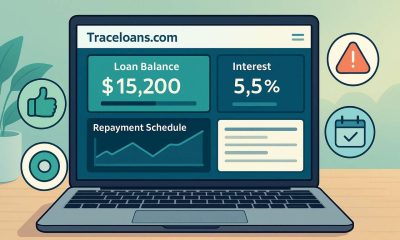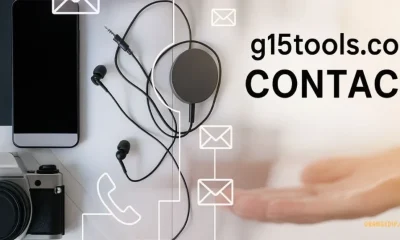Useful Tools
AnonIBs: The Rise and Fall of Anonymous Image Boards

Introduction
In the vast digital landscape, AnonIBs emerged as one of the most controversial anonymous platforms on the internet. It became known for its unfiltered sharing culture, anonymity, and the freedom it offered users to post without revealing their identity. However, this same freedom that once drew millions of visitors eventually became the source of its downfall. With minimal moderation and unrestricted posting, AnonIBs soon gained infamy for hosting inappropriate and non-consensual content.
Understanding AnonIBs is crucial in today’s online world, where privacy, ethics, and digital responsibility collide. This article explores what AnonIBs was, how it functioned, why it became controversial, and what lessons can be drawn from its story. It also discusses how users can protect themselves on similar anonymous platforms that still exist today. Let’s dive deeper into the complex world of AnonIBs — the good, the bad, and the cautionary.
What Is AnonIBs?
AnonIBs, short for “Anonymous Image Boards,” referred to a collection of online communities where users could post images and comments without signing up or revealing their identities. It followed the model of early internet forums but with a visual twist — images were the center of every discussion thread. Users could create topics, reply with pictures, and remain entirely anonymous.
At its core, AnonIBs celebrated free expression. Anyone could post about anything — from hobbies and local interests to memes and niche topics. However, this lack of oversight also allowed users to share private or explicit content without consent, leading to major ethical and legal issues.
Over time, AnonIBs became a digital symbol of both internet freedom and its darkest consequences. Its existence raised important questions about how much anonymity the internet should allow and where the line between freedom and abuse truly lies.
How AnonIBs Worked
AnonIBs operated on a simple framework that made it accessible and appealing to users across the globe.
1. Complete Anonymity
No user registration was needed. Posts appeared under temporary IDs or no name at all. This feature encouraged open expression but also removed accountability.
2. Image-Based Threads
Each thread revolved around an image. Discussions were built through visual responses rather than long text-based comments, giving it a fast and visual appeal.
3. Themed Boards
AnonIBs had multiple boards categorized by topic, location, or interest. Users could browse by country, theme, or subject — everything from humor to photography to adult content.
4. Lack of Moderation
One of its biggest flaws was poor content control. Unlike mainstream forums, there were no strict rules or moderators monitoring uploads. As a result, illegal or harmful material often appeared and stayed online for extended periods.
5. Mirror Sites
Because authorities frequently shut down domains, mirror sites and backup servers popped up to keep the community alive. This made it almost impossible to fully remove AnonIBs from the web.
Why AnonIBs Became Controversial
Despite its promise of freedom, AnonIBs quickly gained a notorious reputation.
A. Non-Consensual Content
The most serious issue was the posting of private or intimate images without consent. These photos often targeted individuals who never agreed to share them, sparking outrage and multiple legal investigations.
B. Privacy Violations
AnonIBs blurred the line between public sharing and invasion of privacy. Once content was uploaded, it spread rapidly, making removal nearly impossible.
C. Lack of Accountability
Because users were fully anonymous, tracing harmful actions to individuals was extremely difficult. This environment allowed cyberbullies, trolls, and harassers to thrive.
D. Legal Troubles
Governments and law enforcement agencies across several countries investigated the site for hosting illegal material. Domain takedowns and arrests followed, but mirror sites kept resurfacing.
E. Cultural Impact
AnonIBs influenced online culture, highlighting how anonymity could empower both creative expression and destructive behavior. It sparked a global discussion on digital ethics and internet safety.
The Downfall of AnonIBs
Over time, the platform’s reputation caught up with it. Public outrage, legal pressure, and mounting ethical concerns forced major service providers to block or remove access to AnonIBs.
Authorities targeted not just users but also those running mirror sites. Several individuals were arrested for distributing explicit content through the network. The original site was eventually taken down, though smaller versions and clones occasionally resurfaced.
However, the fall of AnonIBs didn’t mean the end of anonymous boards. Instead, it became a case study — showing what happens when platforms prioritize total freedom without responsibility. Its story continues to shape debates about online privacy and content regulation.
Lessons Learned from AnonIBs
1. Anonymity Needs Responsibility
While anonymity can encourage openness, it must come with clear community guidelines and moderation to prevent abuse.
2. Moderation Is Essential
Every online platform should have active moderators and automated systems to detect harmful or illegal content quickly.
3. Ethical Design Matters
Websites must balance freedom of speech with user safety. Allowing people to post without oversight can easily lead to exploitation.
4. User Awareness Is Key
Users should understand that anonymity doesn’t mean safety. What’s shared online can be copied, leaked, or misused instantly.
5. Legal Boundaries Must Be Clear
Platforms that operate across borders need clear terms of service and compliance with privacy laws to avoid legal trouble.
How to Stay Safe on Anonymous Platforms
If you choose to use anonymous sites, take these precautions to protect yourself:
-
Never upload personal or identifiable images.
-
Avoid sharing sensitive information like names, locations, or contact details.
-
Use a VPN to protect your IP address and maintain privacy.
-
Beware of phishing or malware links. Unregulated boards can easily host malicious files.
-
Report illegal content immediately to the relevant authorities or hosting services.
-
Prefer moderated communities that still allow anonymity but have clear ethical boundaries.
These steps ensure that you maintain your privacy without crossing into unsafe or unethical online spaces.
Modern Alternatives to AnonIBs
Although AnonIBs is gone, several anonymous communities still exist today. Some follow stricter moderation policies, focusing on creativity, discussion, or meme-sharing.
Examples include platforms where users can express themselves without linking personal accounts, yet still maintain community guidelines. The goal is to protect users while allowing them to share freely.
The difference between these modern platforms and AnonIBs lies in balance — they strive to offer privacy with accountability. They demonstrate that it’s possible to build safe anonymous spaces without repeating the mistakes of the past.
The Legacy of AnonIBs
AnonIBs changed how people think about anonymity online. It revealed both the potential and danger of total freedom. On one side, it empowered users to express themselves honestly without fear. On the other, it showed how easily anonymity can be misused when there are no boundaries.
The website’s story has inspired developers, law enforcement, and policymakers to rethink online safety. Many of today’s privacy-focused apps and communities are built with stronger safeguards because of what happened with AnonIBs.
Its legacy serves as a reminder that digital platforms shape human behavior — and that ethical design can protect both expression and dignity.
FAQs
1. What does AnonIBs mean?
AnonIBs stands for “Anonymous Image Boards,” a type of website where people share pictures and comments anonymously.
2. Is AnonIBs still active?
No, the original AnonIBs has been shut down. However, some unofficial copies or mirrors may still appear online.
3. Why was AnonIBs controversial?
Because it hosted non-consensual and explicit content, violating privacy and leading to multiple legal cases.
4. How was AnonIBs different from other forums?
Unlike Reddit or other platforms, AnonIBs required no registration and had little to no moderation, making it a free-for-all space.
5. What lessons can be learned from AnonIBs?
It showed that total anonymity without rules leads to abuse, highlighting the need for moderation, ethics, and accountability in online spaces.
Read More: Is Crypto30x.com Legit? What You Need to Know Before
Conclusion
The story of AnonIBs is both fascinating and cautionary. It started as a space for unrestricted sharing but ended as an example of how freedom without responsibility can spiral into chaos. Its legacy underscores that the internet needs both openness and accountability to remain safe and respectful.
For users, the takeaway is clear: protect your privacy, understand the risks of anonymity, and avoid platforms that disregard ethics. For developers, the lesson is to create online spaces that empower people to express themselves responsibly.
While AnonIBs may no longer exist, its impact still echoes through every conversation about online privacy, moderation, and freedom of expression. The challenge now is to build a digital future where anonymity can coexist with safety — a future where freedom online is used not to harm, but to connect and create responsibly.
-

 Interview Preps5 months ago
Interview Preps5 months agoWhy Should We Hire You As A Teacher? Practical Answers
-

 Interview Preps5 months ago
Interview Preps5 months agoTop 35 Must Know Greggs Interview Questions & Expert Answers!
-

 Articles1 year ago
Articles1 year agoWhich Skills Are Needed To Work In The Nursery?
-

 Interview Preps4 months ago
Interview Preps4 months agoThe Most Common Questions For Aldi Video Interview
-

 Interview Preps5 months ago
Interview Preps5 months ago10 Most Common Competency Based Interview Questions





















































































































































